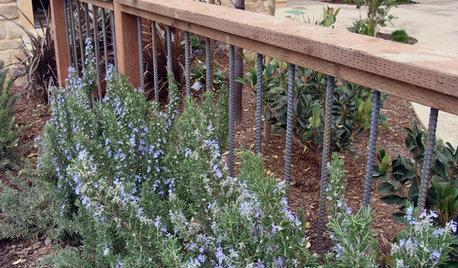Over twenty elements are needed for a plant to grow. Carbon, hydrogen & oxygen are absorbed from the air & water while the rest are obtained from the nutrient solution. The rest of the nutrients & their source in nutrient solutions are:
Primary nutrients: Primary nutrients are designated on the front label of fertilizers as the N-P-K ratio.
Nitrogen
- Calcium nitrate Ca(NO3)2 Potassium nitrate KNO3 or Saltpetre
Ammonium compounds (NH>sub>4) (see pH FAQ)
Phosphate
- Potassium phosphate
MonoPotassium phosphate KH2PO4
Potassium
Secondary nutrients Secondary nutrients are used by plants in smaller amounts.
Calcium
- Calcium nitrate [Ca(NO3) 2]
Calcium chloride (CaCl2): May be used but adds extra chlorine. Some hydroponically grown plants are very sensitive to chlorine.
Calcium Sulfate (CaSO42H2O): Can precipitate
Magnesium
- Magnesium sulfate (Epsom salts) MgSO47H2O
Trace elements (micronutrients) Trace elements are nutrients needed in small quantities.
Boron
- Boric acid (H3BO3)
Sodium borate (Borax)
Chlorine
Copper
- Cupric sulfate CuSO4 Copper chelate
Copper sulfate CuSO4 5H2O
Iron
- Iron ethylene-diaminetetraacetic acid (FeEDTA)
Iron Diethylenetriaminepentaacetic acid (FeDPTA)
Manganese
- Manganese sulfate MnSO4 4H2O
Molybdum
- Ammonium molybdate (NH4)6Mo7O24
Sulfur (S) is taken up as sulfate (S04-) by plants
Magnesium sulfate (Epsom salts)
Potassium sulfate Zinc
- Zinc sulfate ZnSO4 7H2O
Zinc EDTA
Types of nutrient
Hydroponic growers can mix their own fertilizer or purchase special hydroponic fertilizers. Hydroponic solutions need to be water soluble or their ingredients may precipitate. Nutrients that precipitate come out of solution, are not available for absorption by plants, & can result in deficiencies. Soil fertilizers are generally not advised since they are not water soluble. An example is N in the form of ammonia (NH4), and nitrate (NO3) discussed in the PH FAQ. Furthermore, soil fertilizers may not contain calcium & or all the trace elements since soil based plants take part of their nutrition from the soil.
Hydroponic formulations are available in single or separate parts to avoid precipitation. Although there are some formulations that combine all the nutrients into a single mix most products separate them. Ions which can precipitate are kept apart until the final mixing. Generally, Ca is kept separate from the sulfate and phosphate salts.
Hydroponic nutrients are available in grow & bloom formulas. Grow formulas promote vegetation & provide a higher N:K ratio. This means the first number on the front of the bottle (or the NPK ratio) is greater than the last. Bloom formulas will usually have more potassium (K) or a higher K:N ratio than the grow formula. This means the last number of the NPK on the bottle should be larger than the first. Bloom formulas promote budding, flowering, fruitset and vegetable production. They are used when budding starts & throughout the fruiting stage. Bloom is also good for plants that do not require nitrogen, such as cacti, succulents, & legumes.
Different nutrients contain ingredients that have different purity & grades (pharmaceutical, pure, technical, food, or fertilizer) of its ingredients. This can affect the cost & solubility of the ingredients. Purity of the nutrient materials or chemicals is important in preparing a solution. Although fertilizer grades of chemicals may be used for some crops they have impurities. The higher grades of chemicals in the nutrient are less likely to result in impurities & precipitation.
pH & nutrients
See the pH FAQ.
Mixing nutrient
Nutrient, like acids require attention to safety in mixing. As discussed in the pH FAQ, mixing mineral salts can result in an exothermic reaction. These reactions can cause skin & eye injuries, & safety precautions (eyewear, protective clothing, etc.) are necessary. Manufacturer directions for mixing should be followed. In general, one should fill the container about ¾ full of water & slowly stir in the salt. When the particles disappear, add water & stir or let stand for several minutes to a day. It is important to wait until the particles are dissolved since they can clog pumps &/or cause deficiencies. Any material that comes into contact with the nutrient should be non reactive (stainless steel, glass, & non toxic plastic). Plant toxicity can occur when the nutrient is exposed to toxic metals or minerals.
Nutrient interactions
Nutrient interactions
Plant deficiencies &/or toxicities may be due to nutrient interactions in solution. The terms "locked up, locked" out refers to when a nutrient is not available for the plant to absorb. Causes include pH (see the pH FAQ), displacement reactions, or precipitation reactions.
Nutrients can be positive (cations) or negative (anions). An excess of cations is more likely to displace other cations. The name for this occurrence is a displacement reaction. For example, an excess of K+ can antagonize or impede the uptake the positive Fe, Mg, Mn, Zn. An excess of NH4+ can displace the positive (Mg, Ca, K, etc.). If the uptake of an element is impeded, it is not available for absorption & a nutrient deficiency may occur.
Another way nutrient deficiencies can occur is nutrient precipitation reactions. Positive & negative nutrients can chemically bind & precipitate out of solution. For example, the negative sulfate (S04-) can precipitate with the positive Ca++ forming calcium sulfate. A material which has precipitated out of solution is not available for absorption & can result in a deficiency.
Nutrient maintenance
The following are tips on nutrient maintenance:
Avoid using old nutrient since precipitation reactions can occur.
With closed systems, the nutrient is placed below the grow tray so it can recirculate back into it. 2 Topping off nutrient should not include full strength nutrient since concentrated nutrient can chemically burn the roots. Furthermore, mkirkwag recommends: "When I bought my first nutrients, they laid out an amount per gallon for a new fill, and a lesser amount for top-offs. Each successive top-off got less nutrient per gallon, and of course, when the water is changed out, you start over again with the full strength. "1
Flow rates
The following is a general guide for flow rates. Higher rates may be needed depending on the crop grown or during the summer due to evaporation.
Open systems may need nutrient four times daily or more depending on the plant. Plants are normally supplied nutrient four to six times during daylight hours.
Drip system: Flow rates of 1 drip/second.
With NFT, plants may be given nutrient around the clock, which can result in greater nutrient uptake.
Ebb and flow: The pump should remain on for about 15 - 30 minutes, which is called a flood cycle. This should be done 4-8 times daily depending on the plant size, evaporation rates, & the media used. The entire flood & drain cycle should not be more than ½ hour or root damage can occur.
Aeroponics has a misting cycle which is generally 2 minutes on & 5 minutes off 24 hours daily.
When to change nutrient:
Nutrient is changed each time with open systems, whereas with closed systems nutrient is changed biweekly.
A system with a small reservoir may need nutrient changed more often than a system with a large reservoir.
A system with many plants, large plants, or heavy nutrient users may use up nutrient at a faster rate & need to be changed more often.
If plants exhibit deficiency symptoms nutrient should be changed. The system may need to be flushed depending on which deficiency is suspect.
NUTRIENT DISORDERS
Deficiencies
Deficiencies can occur because of dilute nutrient, nutrient reactions in solution, or pathogens. Symptoms of toxicity & deficiency may be similar. Growers should routinely assess their plants, paying close attention to symptoms on leafs, roots, stems, etc.
Leaf tissue is the main area where nutrient symptoms appear. Although leaf analysis is the best indicator of plant nutrition it is expensive. Observing whether the symptoms started first on the older or younger leaves limits the cause to mobile versus immobile nutrients. Mobile nutrients (P, Mg, & Cl) can move from where they are stored to places where they are needed. Deficiency symptoms appear mostly in the lower (older) leaves. Symptoms occur because the nutrient has moved to the younger parts of the plants; thus leaving older leaves deficit. N forms are also mobile - & the NO3- ion is more mobile than NH4+. Immobile nutrients (Ca, B, & Fe) produce symptoms in the younger leaves. K, Zn, Cu, Mn, S, & Mo are intermediate in plant mobility & under certain circumstances the intermediate elements are mobile. Which nutrients are mobile, immobile, & intermediate vary, however, depending on the source.
Adding micronutrients to treat a deficiency causes problems since nutrients can antagonize each other resulting in an excess of deficit of other nutrients. General recommendations for treatment include the following:
Avoid overcompensation - it can result in nutrient excess &/or other disorders.
Change the nutrient weekly instead of biweekly.
Switch to a different hydroponic fertilizer.
Apply a salt that contains only the deficient micronutrient. A micronutrient complex is not used since it can cause antagonism. Micronutrients can be added over time in small amounts with the irrigation water, applied once with a concentrated solution with water, or applied as a single foliar spray.
When applying foliar sprays, apply daily or every other day during cool temperatures. A wetting agent prevents water from beading up & burning the leaves.
Toxicity
Toxicities more difficult to correct than deficiencies. The first step is to stop adding the micronutrient that is in excess. General recommendations for treating toxicities are:
Switch to a fertilizer without the toxic nutrient.
Some nutrients can be lowered by raising the pH.
Use antagonism methods - slightly increase the level of a micronutrient that will reduce the availability of another (e.g., if Zn is at high levels, slightly increase the Cu).
1 mkirkwag 2leafbrain2003a













Related Discussions
Osmocote Yay or Nay?
Q
Need PPM on Keith Roberto Nutrient Formulas
Q
Calculating the amount of nutrients on a non-recirculating system
Q
Potted citrus - nutrient deficient?
Q